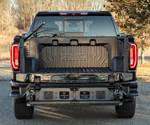Teijin's Sereebo CFRTP adopted for 4K video cameras
Carbon fiber-reinforced thermoplastics add strength, reduce weight for Panasonic camera components.

Panasonic HC-X2000 video camera. Source | Teijin
Teijin Ltd. (Tokyo, Japan) announced on March 19 that its Sereebo carbon fiber reinforced thermoplastic (CFRTP) has been selected for use in Panasonic Corp.’s (Kadoma, Japan) newly launched digital 4K video cameras, the HC-X2000 and HC-X1500.
A version of Sereebo developed for injection molding, which uses Teijin’s polycarbonate resin Panlite as the matrix, has been adopted for the handle unit and top cover of both cameras. According to Teijin, Sereebo, which it says is the world's first CFRTP for mass production (including automotive applications with the CarbonPro pickup box), significantly reduces molding time to enhance production efficiency.

Pansonic HC-X1500 video camera. Source | Teijin
The HC-X2000 and HC-X1500 video cameras both offer 4K60p/10-bit videography for professional applications including television broadcasting. The HC-X2000, which is about 40% smaller and 15% lighter than conventional models, is designed to combine mobility with a robust 4 hours and 35 minutes of continuous shooting.
Camera chassis and bodies are typically made with plastics reinforced with chopped carbon fibers for strength and reduced weight; however, Teijin says these short fibers cannot fully realize the strength and other features of longer carbon fibers. Sereebo is said to feature added strength, weight reduction and flame retardance as well as a smooth surface and the elimination of carbon fiber bosses (protrusions) on the surface.
Teijin says it is accelerating its development of mass-production applications for Sereebo, including precision equipment and consumer electronics that require both strength and reduced weight.
Related Content
-
Natural fiber composites: Growing to fit sustainability needs
Led by global and industry-wide sustainability goals, commercial interest in flax and hemp fiber-reinforced composites grows into higher-performance, higher-volume applications.
-
The potential for thermoplastic composite nacelles
Collins Aerospace draws on global team, decades of experience to demonstrate large, curved AFP and welded structures for the next generation of aircraft.
-
Manufacturing the MFFD thermoplastic composite fuselage
Demonstrator’s upper, lower shells and assembly prove materials and new processes for lighter, cheaper and more sustainable high-rate future aircraft.

.jpg;width=70;height=70;mode=crop)














